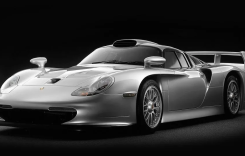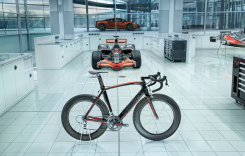WP Suspension has been working feverishly in the R&D department and the WP AER 48 fork is now available to the public. MotoUSA recently spent a day riding the new AER 48, which is a direct replacement for the 4CS fork on newer KTM and Husqvarna MX bikes. The AER 48 air fork offers a three pound weight savings over the 4CS fork – a huge savings, especially on bikes that are already the lightest in the class. And now that we’ve seen the new KTM Factory Editions equipped with the AER 48 forks, the likelihood of the 2017 KTM SX-F models coming with the WP air fork is practically guaranteed.

The WP AER 48 left fork leg holds the air, with only one filling valve to simplify tuning the fork. There is a bypass for pressure compensation, as well as an integrated hydro-top. The multi-stage sealing system uses low-friction seals for smooth action. The design of the insulated air chambers makes it impossible for air to escape. The forks retain their shock absorbing function, even in the unlikely event of a malfunction, and the fork won’t collapse even if a seal is compromised.
The right leg of the AER 48 fork is home to the damping

Our two test riders for the day, a pro and a vet expert, rode a 2015 Husqvarna FC 450 and reported it was the best first impression of any air fork design they’ve ever sampled. WP engineers did a lot to eliminate friction of the fork system and seem to have nailed it. The fork moves effortlessly, giving absolutely great small-bump compliance, an almost impossible job for most air forks out there. The AER 48 fork stays tall and plush around the track. It seems to almost push the front wheel down for a very connected feel and corner traction on flat turns is remarkable. The fork feels fluid through mid stroke. It’s a sort of dead feeling in that you don’t feel the stages or transitions from initial, mid or bottom stroke. It’s seamless. The AER 48 is also well valved in all areas. During our test sessions it held up on jump faces and g-outs, didn’t wallow or stick down in high-speed rollers and never once blow-through and bottom out.
The only negative was the fork almost stays too high in the stroke all the time.

A few laps in, this starts to affect corner entry as the bike chassis is so laid back. While there is still plenty of front end traction on the tire, it’s a little choppered-out to get aggressive with line choices when fatigue sets in. We made a fork adjustment to compensate with the help of the WP techs, who dropped about a half bar of pressure from 10.8 to 10.3 (WP staff like to use bar, this converts to 156 psi down to 149 psi). The adjustment worked, as the bike was easier to push into corners.
However, the beauty of how the AER 48 handled chatter/small-ish braking bump was affected. Instead of the tire rolling on the surface between the bumps and using the plush stroke to absorb, it was chattering a bit, skipping the gaps and tapping the tops of each braking bump. It is a compromise our testers were willing to take for late-race turn ability.
The AER 48 is a major upgrade from a 4CS and could be the best air fork in motocross out of the box. We had zero desire to tune out any harshness or abrupt character of the fork in the initial stroke and it also never blew-through and bottomed. Literally the opposite of the Showa SFF-TAC (triple air chamber) fork on the RM-Z 450 and not nearly as finicky as the other air forks currently on the market. Suggest retail on the AER 48 is $1800.
What’s Next
WP isn’t just focusing on the motocross and off-road market, they make Cone Valve forks for KTM 990’s and springs for KTM 1190 Adventure bikes as well as components for street bikes









